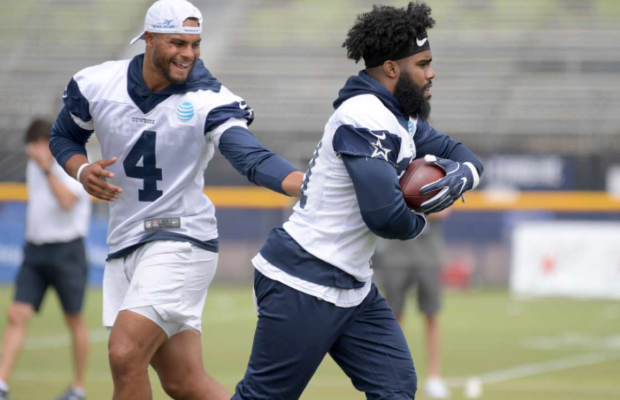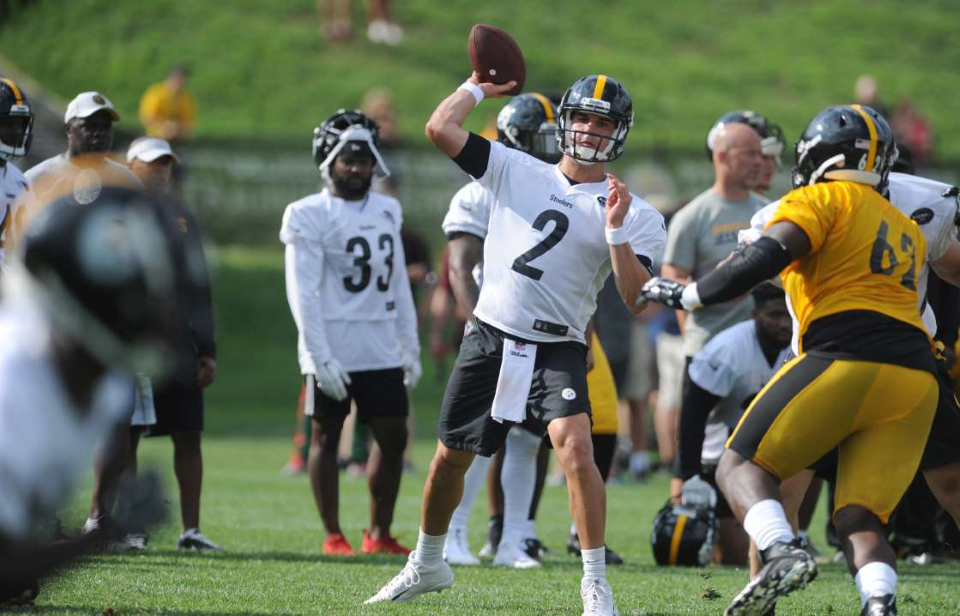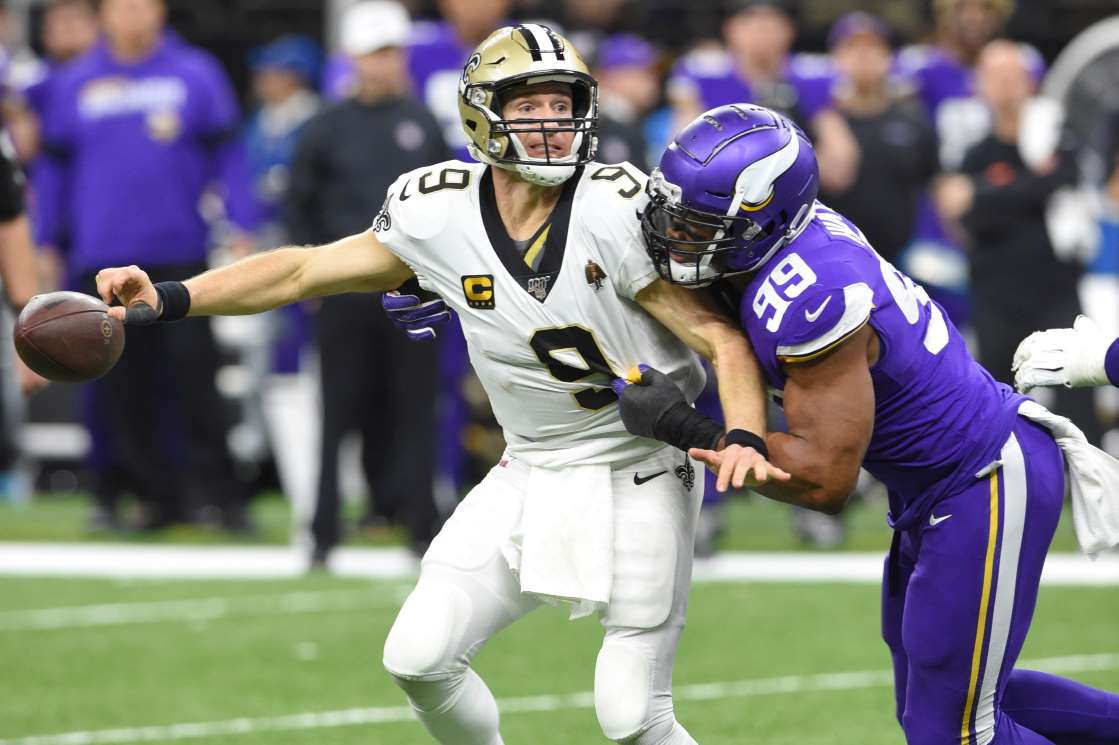As clock ticks to NFL training camps, key COVID-19 issues remain unresolved

By Sam Robinson
After a quieter stretch on the COVID-19 front, the NFL is grappling with the pandemic this week. Just as potential policies are surfacing, players are beginning to test positive for the coronavirus.
Ezekiel Elliott, taking a handoff from Dak Prescott in a training camp practice, was among at least four Cowboys and Texans players who contracted COVID-19.© Kirby Lee-USA TODAY Sports Ezekiel Elliott, taking a handoff from Dak Prescott in a training camp practice, was among at least four Cowboys and Texans players who contracted COVID-19.
Dallas running back Ezekiel Elliott was among a group of at least four Cowboys and Texans players to contract the virus, and standout Broncos safety Kareem Jackson became the second Bronco to test positive -– following Von Miller’s April diagnosis. Training camps are scheduled to open next month, but many questions remain in advance of perhaps the weirdest season in the NFL’s 101-year history.
Here are issues the league must navigate:

The Steelers typically hold their training camp at St. Vincent College in Latrobe, 40 miles east of Pittsburgh. But all NFL teams will hold camps at their team facilities this year. Photo: Philip G. Pavely-USA TODAY Sports
Current landscape will create dicey training camps
Eleven NFL teams play in states that are experiencing record numbers for COVID-19 cases. Arizona, California, Florida, Nevada, North Carolina, and Texas were among the states that saw their seven-day average for coronavirus cases hit new peaks over the past week. The disease’s U.S. death toll now exceeds 117,000.
The positive tests of Elliott, Jackson and the others are warning signs in advance of every team’s roster convening for training camp at team facilities. Despite the NFL mandating masks off the field, capping weight room attendance and suggesting meetings be either virtual or held outside, camps starting within five weeks presents an opening for chaos.
Dr. Anthony Fauci, director of the National Institute of Allergy and Infectious Diseases, recommends the NFL adopt an NBA-style bubble format. “Unless players are essentially in a bubble — insulated from the community and they are tested nearly every day — it would be very hard to see how football is able to be played this fall,” he said.
But the league, the nation’s most contact-centric team sport, has not yet adopted that format. Players, along with their dozens of coaches and additional essential personnel, will venture out into the world after each practice. No known restrictions will be placed on them away from team facilities during the season.
With camps collectively set to feature nearly 10 times the personnel NBA teams will have in Orlando, it could present a minefield for the NFL. The prospect of certain training camps not getting off the ground will be in play, which would begin an off-axis season.
League must expand rosters
If the NFL is serious about forging ahead with a season that could involve hundreds of players contracting COVID-19, reinforcements will be needed. The CBA the players ratified in March expands practice squads from 10 to 12 players, and teams will be able to dress 48 players -– up from 46 –- on game days. The virus must prompt the league to further increase roster sizes.
News of discussions centered on bumping practice squads to 16 players emerged Wednesday. Four new practice squad spots might not be sufficient as an unpredictable virus continues to ravage the country. The P-squad minimum salary was $8,000 per week last season, so a sizable expansion would not be a significant financial hit for teams. Housing more than 16 players on taxi squads would create interesting position battles and the potential for additional in-season roster tinkering, but it will probably be necessary. This setup would allow more players to earn NFL salaries and audition for coaches.
And if the league is intent on accepting the fact many players will contract the virus, injured reserve may need to be altered. Or, a virus-based sub-category -– which admittedly sounds ridiculous considering the country’s present state -– could become necessary.
How will the league function if a team must quarantine?
If enough players on a team test positive, a 14-day quarantine could sideline it. It could also potentially sideline its next two opponents, creating a chain reaction that would threaten the NFL schedule.
Every Week 2 game on this season’s schedule features opponents sharing bye weeks, but this will not account for a virus-emergency scenario. Making up an NFL game obviously is not akin to Major League Baseball adding a doubleheader when a team visits a certain city. If three teams’ schedules are affected, the season’s integrity would be in jeopardy.
The NFL played every game during the strike-shortened seasons of 1982 (nine games) and ’87 (15). The Saints played through their 2005 slate impacted by Hurricane Katrina; the Vikings and Eagles played the NFL’s first Tuesday game since the 1940s because of the Metrodome’s collapse in December 2010. NFL teams have played the same number of games in every season since 1935. Would the league consider a season complete if certain teams did not play 16 games?
What if states reimpose lockdowns?
If COVID-19 continues to ravage the South -– and potentially other states –- over the next several weeks, lockdown measures used during the spring may return in some of those states. The NFL said this week no plan exists for such a scenario. Alternate playing and practice sites would need to be identified on the fly, and travel to those locales may still be a problem during the season.
This may be an extreme circumstance, considering stadiums may well include no fans this season anyway. But certain states have been more aggressive on this front, some imposing stay-at-home orders for months-long spans. The league would be wise to prepare contingency plans, which could create interesting game sites in cities that have never hosted an NFL game. If enough viable cities prove unable to host events because of the virus, however, the season may need to be paused.
Would delaying the season matter?
This year’s schedule includes no division games in Weeks 3 or 4, setting up an opportunity for the league to cancel those contests if need be. That would then move Weeks 1-2 to the end of the season and make Week 5 the opening week. It would seemingly buy the league more time on the testing and logistics fronts, and adjustments are annually made in case a Super Bowl is delayed. But the season extending into mid-March — when the next league year starts — would require another negotiation with the NFLPA. The union brass would want the majority of its workforce healthy in time for free agency, which begins on Day 1 of the 2021 league year. But a delay may bring another problem …
a person with a football ball: Cold weather potentially could bring risk of an overlap between a coronavirus second wave and the next flu season. But the NFL doesn’t have the option of not playing in cold weather.© Denny Medley-USA TODAY Sports Cold weather potentially could bring risk of an overlap between a coronavirus second wave and the next flu season. But the NFL doesn’t have the option of not playing in cold weather.
A sneaky threat to the NFL season
Fauci recommended this week that baseball not extend its season too late into the fall. Citing cold weather potentially bringing risk of an overlap between a coronavirus second wave and the next flu season, Fauci said he would advise baseball to conclude its season before the weather turns cold. The NFL, which plans to hold games in teams’ usual stadiums, does not have this option.
Delaying the season would not exactly help here, obviously, considering the winter weeks that follow the Super Bowl. A recent Japanese study also indicated COVID-19 contraction was 19 times riskier indoors than outdoors, posing a problem for the teams that play in domed stadiums and presenting a possible no-win situation for the NFL. Given the virus’ unpredictability, overreacting now does not make much sense. The NFL may need to revise its 2020 blueprint, however, depending on how the now-likelier-to-occur baseball season unfolds.
Will NFL allow players an option to skip the season?
Major League Baseball has proposed an important stipulation for its COVID-altered season. Players deemed higher risks to develop complications from the virus can opt out of the season and receive their full salary and service time. Players who are not deemed high risk can opt out as well but would not be paid or accrue service time. With football featuring a bit more contact than the sport it usurped to be the nation’s most popular, the NFL must protect players who face greater risks if they contract the virus.
Players being transported to emergency rooms -– as the league’s season continues -– because of a virus would present surreal optics. But an opt-out call might be difficult. Over half the NFL’s players earn league-minimum salaries. A greater percentage are in danger of losing their jobs for various reasons. Even if a higher-risk player’s 2020 salary is guaranteed, his 2021 job will not be. Potentially facing a rare salary cap decrease come March, teams will not hesitate to rely on rookie-contract players over middle-class veterans. That could put certain higher-risk players to a difficult choice.
Would the league green-light a solution to prevent players with pre-existing conditions from being cut if they opt to sit out to protect themselves? While that seems like a difficult plan to enact, such a provision may help the NFL given the dangers for all parties if an at-risk player develops severe complications from COVID.
Grim future may be inevitable for many free agents
The sizable sect of starter- or contributor-caliber players who remain in free agency may be fighting multi-front battles. Free agents remain unable to visit teams, due to COVID-19, and may not be permitted to do so until all teams’ training camps open July 28. These late arrivals will impact their chances of standing out on what will likely be mostly low-paying (non-Jadeveon Clowney division) one-year contracts. Some teams may turn to free agents for experience purposes -– with rookies missing an offseason -– but the future of free agency’s middle class may still be bleak. Next year’s second-level free agents may feel the effects of this offseason as well.
In addition to the ongoing NFL-NFLPA negotiations addressing how to bring players back to team facilities, the sides are discussing the financial ramifications COVID could cause. Since the salary cap was introduced in 1994, it has only gone down once –- in 2011. If a fanless season causes the 2021 cap to decrease, more teams will turn to recent draftees on cost-controlled contracts over middle-class free agents.
Training camps will bring high stakes for rookies
College seniors who latched on with NFL teams via undrafted free agency are in for tough roads to rosters. The NFL nixing onsite offseason work puts all rookies at a disadvantage, but for bottom-of-the-roster undrafted free agents, it will be more difficult to make impressions on coaches in training camp. Expanded practice squads would present additional opportunities for this contingent, but lower-end players who entered the NFL in recent years may have the edge on most 2020 UDFAs for those jobs because of the latter group’s lack of practice time.
A similar scenario emerged during the 2011 lockout, which did not end until late that summer. But at least the players forced to move on from football then entered the job market in an economy not torpedoed by a pandemic. This raises the stakes in this year’s training camps. Similarly, if the preseason is shortened -– a rumored plan –- teams will have less input regarding potential waiver claims. Franchises often find key contributors on the waiver wire after roster cutdown day. They may be more hesitant to sign players other teams cut without seeing as much film on them.

A lost season would be a blow for the Saints and their 41-year-old QB, Drew Brees. Photo: John David Mercer-USA TODAY Sports
If issues prove unsolvable, which teams will be most affected?
No NFL season has been canceled, and as of now, that occurring remains unlikely. But the myriad big-picture issues the league must navigate will not be easy. If it fails to do so, the NFLPA would fight for players to be granted service time for a lost season. The union succeeding on that front would send players who signed one-year contracts this year back into free agency. Franchise-tagged players would have better chances of hitting the 2021 market -– which may not be especially friendly -– because their tag prices would rise. Certain teams would be more impacted than others, too.
The Buccaneers’ Tom Brady plan would absorb a substantial blow if Brady’s age-43 season were nullified. The Saints, who loaded up this offseason to make perhaps one last Drew Brees-guided Super Bowl push, and Steelers -– with a 38-year-old Ben Roethlisberger and several starters due to be 2021 free agents -– would as well. Lamar Jackson becomes extension-eligible next year; the Ravens losing this crucial season when the reigning MVP is on rookie-contract control would be costly.
Read the original article in Yardbarker.com by Sam Robinson